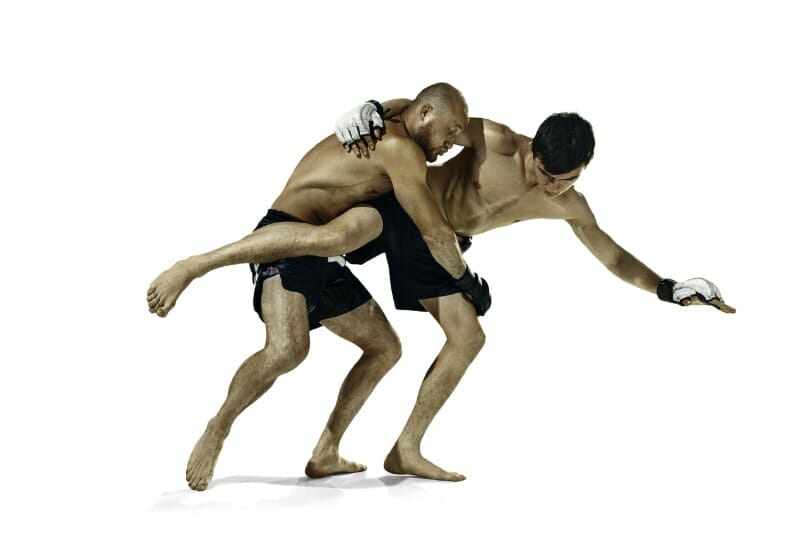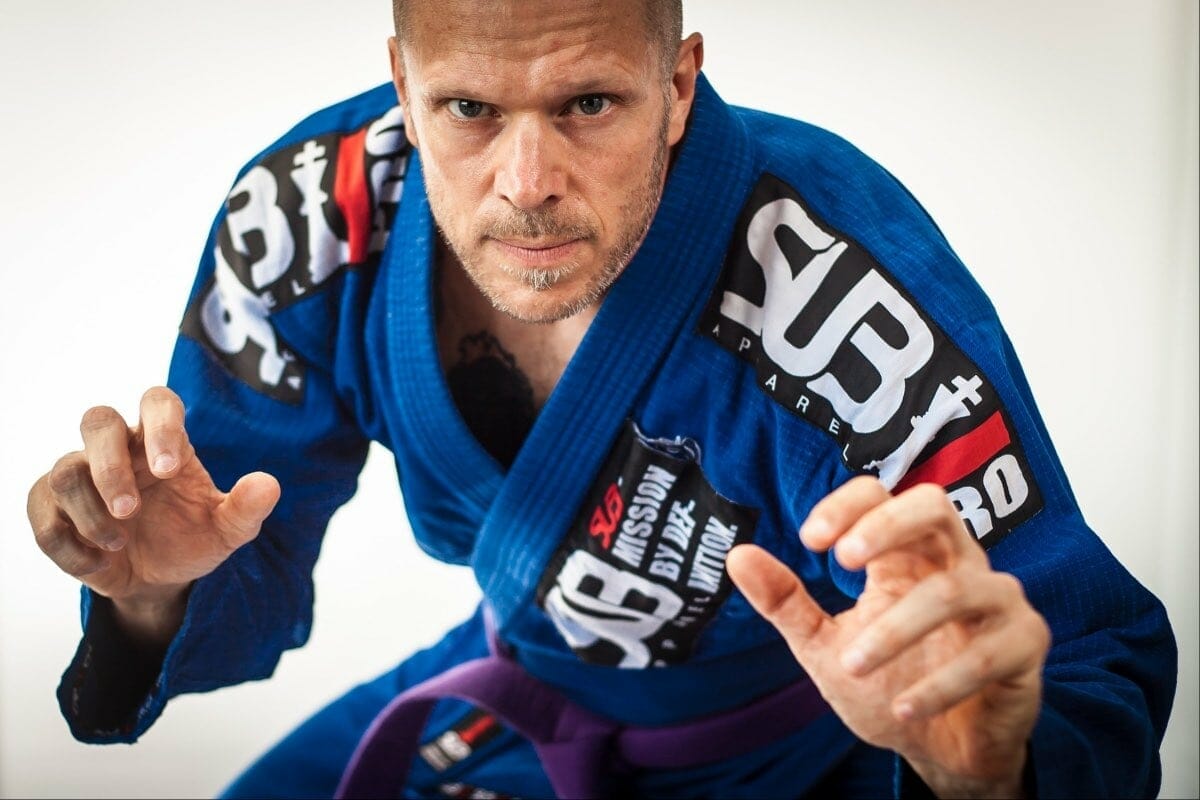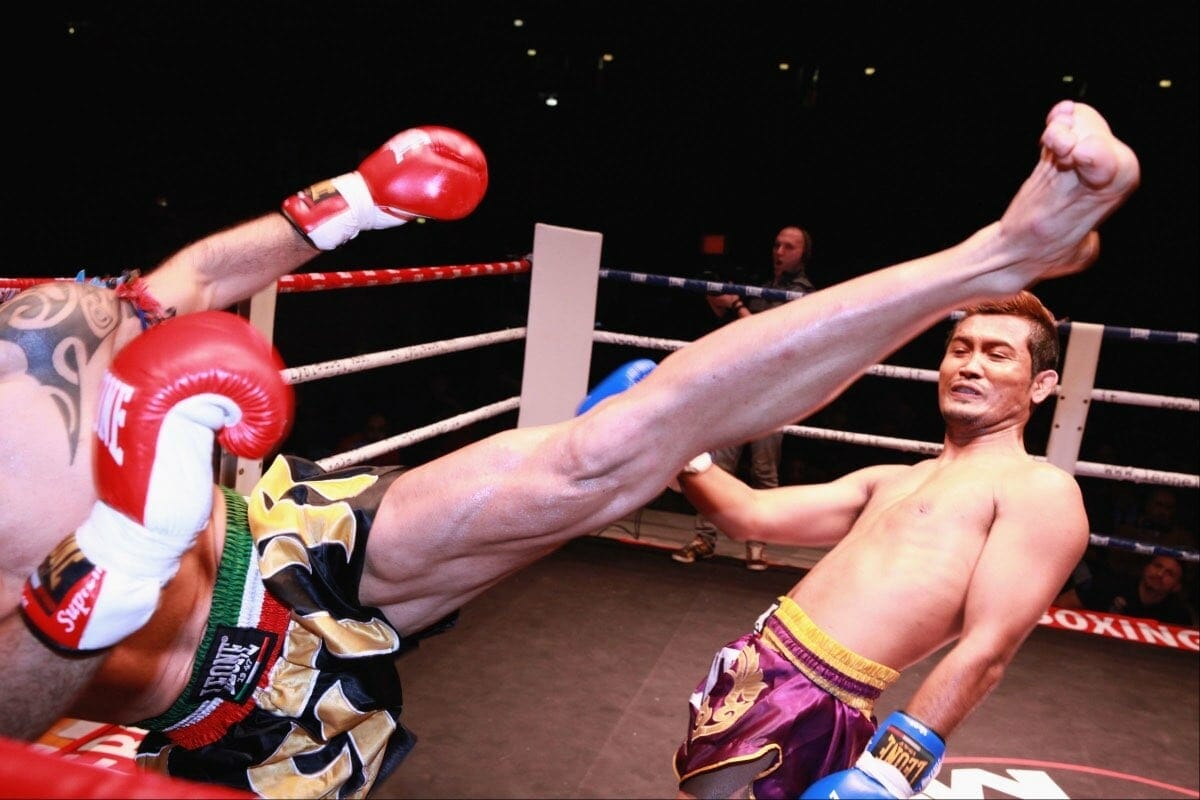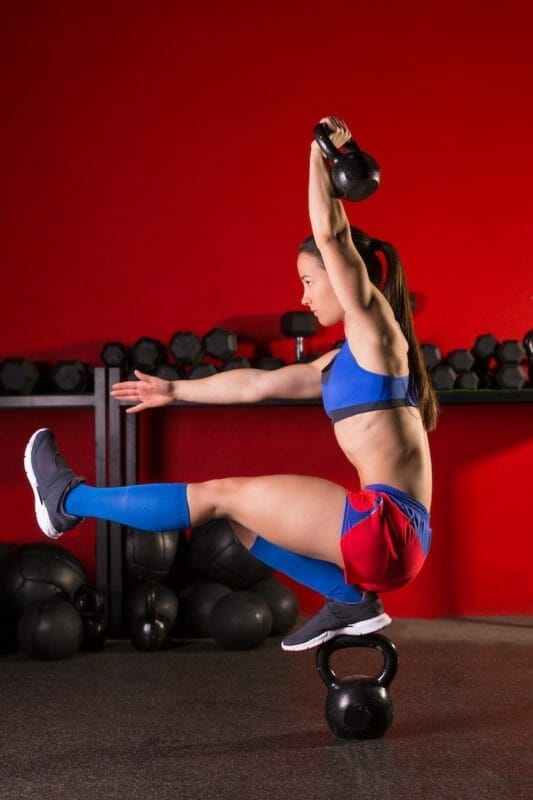CrossFit is an effective program of strength and metabolic conditioning for fighters and martial artists The emphasis on total body workouts, rather than targeting specific muscles, makes CrossFit great for the training demands of most sports. And martial arts training, with its many disciplines, is one such sports domain where CrossFit adds value.
In our experience, martial artists like to spend as little time in the gym as possible, preferring more time on the mat.
Here's where CrossFit and martial arts can work together to improve performance.

By targeting major muscle groups at once, sparing the athletes from hours in the gym. It helps increase power, flexibility, and the aerobic engine without major investments in time.
A trend towards using CrossFit instead of other types of conventional gym conditioning workouts is apparent in the world of martial artists and fighters. Serious athletes are open-minded and will use any method available to them that gets the job done. Many traditional training exercises for karate, judo, Brazilian Jiu-Jitsu and other styles, are like those used in a typical CrossFit WOD.
What makes CrossFit popular among all Brazilian Jiu-Jitsu belts, Judokas, and even MMA fighters? Why do they need it in the first place? And what are the complaints that critics throw against this relatively new form of training?
CrossFit Believers And Doubters In The Martial Arts World
Combat sports athletes need explosive power to reach the top in their sport. But they also need to have the stamina for long bouts and training sessions. Boxers fighting 12 three-minute rounds or MMA fighters grappling opponents for 5 rounds burn oxygen and calories at a ferocious rate.
Strong bodies dish out punishment and resist powerful opponents. Flexible but strong martial artists have an advantage over athletes with brute strength. CrossFit's cornerstones are strength, metabolic conditioning, and mobility. Exactly what martial artists need.

Top BJJ black belts and MMA fighters today use CrossFit to supplement their training. Multiple BJJ World Champion and ADCC Champion Rubens “Cobrinha” Charles, Jason “The Athlete” MacDonald, and even current UFC women’s bantamweight champion Cris Cyborg do CrossFit.
It's not popular with everyone. At the opposite side of the spectrum, opposers of CrossFit workouts for martial arts criticize the lack of proper form in movements. CrossFit fans are quick to point out that form should never be compromised, even in the fast-paced WODs. Participants who ignore these rules are either not true CrossFit athletes or are professionals that understand the risks.
The potential for injury is arguably higher in CrossFit than many other training regimes. Again, the movements and teaching are not to blame. Egos impede caution when there's a clock timer ticking. Maybe this is the flaw in the program.
Olympian Judoka and Renzo Gracie BJJ Black Belt Travis Stevens makes his case against CrossFit by saying it lacks structure. He also suggests that athletes train under certified strength and conditioning coaches and not gym coaches teaching a WOD as a one-size-fits-all solution for everyone in the gym.
So with this in mind, should martial artists consider CrossFit as a cross-training option? Will it improve athletic performance?
Egos impede caution when there's a clock ticking
Is CrossFit Safe For Fighters?
One of the biggest concerns about CrossFit is that it isn’t safe. Due to the blistering pace of the sport's uptake and the immense popularity of the brand, the media has sensed an opportunity for sensationalist reporting on CrossFit injuries. Reporting on the really bad injuries is a sure fire way to get clicks and shares.
Let's look at the different elements at play.
Newbies and inexperienced CrossFit athletes need guidance. Without proper knowledge of basic movements and form, injuries happen. But this is also the case in martial arts, football, rugby, weightlifting, and any sport where bodies are pushed past comfort levels. Again, ego, rather than training methods is a big part of the problem.
Remember that in in a regular gym, you are out on your own, unless the instructor wanders by. Treadmill injuries (an exercise that appears to be safe) are way more common than people realise. Every CrossFit class is led by an instructor who supervises and addresses issues with form.

CrossFit vs BJJ
This is one of those unanswerable questions. It's like asking if apples are better than oranges. Each one has its benefits and each one has advantages over the other. The question is more about your goals.
Do you want to get cardio fit? Do you prefer isometric-type workouts vs isotonic-type strength workouts? Would you like to learn to fight and protect yourself on the street? Are you okay with spending a lot of time hugging people and rolling on the ground? Do you want an exciting sport that helps you lose weight?
If you answer yes to most of the above then BJJ could be for you.
Do you enjoy weight lifting and circuit training-style workouts? Does Olympic weightlifting ring your bell? Do you like statistics, beating personal bests, and constantly trying to improve your game? Do you want to build muscle and flexibility? Do you prefer strength to cardio?
If you answer yes to most of the above then CrossFit might be your thing.
Why CrossFit For Fighters?
No system, including CrossFit, is perfect. Nobody's claiming it's the answer to anything. But in martial arts, CrossFit-style training can offer grapplers and strikers a solid workout that complements their traditional training. Cross training helps athletes adapt to different stresses in their chosen sport.
Let's look at some benefits of CrossFit for martial artists.
1. Focus on Lower Body
Many of us believe the upper body where knockout power comes from. But power generation starts with the legs, moves through to the hips, and finally, to the upper body.
Strong legs help athletes run, sprint, and maintain their base. Boxers use their lower legs to deliver powerful punches. Strikers spend long periods of time on their feet.
With CrossFit, there's no forgetting “leg day”. Martial artists might like to avoid heavy squats but CrossFiters love squatting movements. Exercises such as the squat, deadlift, clean, and even wall ball exercises develop powerful, stable legs.
2. Develop Speed
Speed in sport can dictate the outcome of the game. One of the all-time great boxing trainers Freddie Roach says you can’t teach speed. Sorry, Freddie but you're wrong. In reality, speed is a skill that you can learn and develop.
Speed comes from developing the right muscle fiber and by mastering particular movements. The better you get at a movement, the faster you can perform it with correct form. CrossFit doesn't emphasize speed, per se, but it does place a lot of emphasis on power movements, agility, and flexibility. Improvements in all three areas give athletes a speed boost.
3. Develop A Solid Base
Ever watched a Brazilian Jiu-Jitsu competition and wondered why passing the guard renders 3 points while sweeping your opponent gives 2 points? Eliminating the legs and maintaining your base in the process is more difficult than fighting from your back, and the points system reflects this. To be an effective guard passer, athletes need a solid base.
CrossFit helps athletes avoid being swept by building a strong base. Athletes with solid foundations become formidable opponents when passing the guard and or defending takedowns.
A powerful base is useless without a solid core. Like a skateboard with a Ferrari engine, there's lots of force and nothing to control it. At the same time, a strong core does not equal a six-pack. The core is where force is generated and controlled. Your core muscles stabilize your frame. This is vital for martial artists that move in different planes.
4. Remove Muscle Imbalances
Muscle imbalances are common in almost everyone, whether athletes, weekend warriors, or couch potatoes. In trained sports people, imbalances are the result of training biases. Martial artists need to work on their weak side. A “side” may be weak because of overused and tight muscles. This forces the opposing side to compensate. This can in injury but it might take years to manifest.

CrossFit effectiveness in eliminating unilateral weaknesses comes from the emphasis on single side exercises. Single arm dumbbell snatch movement, reverse single-leg squats, pistol squats, and overhead dumbbell lunges are some of the most common exercises.
Great for focusing on the weak side and preventing compensation. In almost every movement that involves both legs or both arms, we use or “stronger” side more than the “weaker” side. In effect, we compound the problem of muscle imbalance with every movement. Unilateral exercises help to iron out this problem.
Imbalances are the result of training biases
Martial artists are notorious for having overdeveloped hip flexors on one side, or huge shoulder muscles from powerful right hooks. CrossFit didn't invent single arm or single leg movements but it offers them as part of the workouts.
5. Improved Muscle Endurance
The definition of muscle endurance is the ability to sustain repeated contractions over a specific period. Muscle endurance is among the basic components of fitness along with power and strength.
Let’s break things down to the basics first. In terms of strength conditioning, endurance refers to the ability to perform several repetitions of an exercise without the need to rest. Ask yourself how many full squat or full situps can you do without compromising form? 100, 200, 1000…?
Why is endurance key to a martial artist’s success? Improving the muscle's engine allows for repeated sustained movements. It's all about building the body’s lactic threshold. CrossFit WODs are all about fighting off the pain from the lactic acid that floods the body.
Lactic acid is produced in the muscles when there is no oxygen to fuel metabolic processes. Training at your lactic acid threshold can help adapt to increased production of this source of energy. The adaptation improves your ability to keep your hands up when you are striking, for example. Lack of muscle endurance is a common contributing factor in fight losses. Brazilian Jiu-Jitsu athletes that lose their grip on their opponent’s gi put themselves in compromising positions. Boxers get knocked out because they can’t keep their hands up anymore.
CrossFit training can help your muscles perform at a high level in a fight for long periods of time. Lactate levels in the blood are systemic (entire body). CrossFit workouts hit multiple muscle groups in sections. So when your quads get tired it's time to change to the pull-up bar, then over to a shoulder press movement. Lactate levels remain high and your body trains at a higher level. In regular training workouts, muscle fatigue cause athletes to slow down and this causes blood lactate levels to drop. So the training is less effective.
6. Improved Cardiovascular Engine
Cardiovascular fitness is vital to a martial artist's capabilities. VO2 max, a standard for measuring an athlete's aerobic capacity, is the maximum amount of oxygen an individual uses during an activity involving incremental increases of intensity. CrossFit athletes post VO2 max levels of up to 80 ml/kg/min. Considering that top cyclists are also in that range, CrossFiters are no slouches.
High-intensity interval training, a huge component of CrossFit, can seriously improve your cardiovascular endurance.
7. Improvements In Neuromuscular Control

Why do athletes get injured? Among the most common reasons for injuries is poor neuromuscular control, the body's ability to respond automatically to changes in joint stability.
Poor control in this area can mean poor response to joint movements that lead to injury if not corrected.
Two areas of focus for improving neuromuscular control are balance training and dynamic movements. CrossFit is big on static and balance movements such as the handstand walk, overhead dumbbell lunge, snatch, and pistol. These exercises challenge the body in ways that typical gym workouts and even martial arts workouts do not. The benefits are the improved automatic-response control over joints and the decreased risk of injury.
Experts make use of the Functional Movement Screen to assess the asymmetries in movement patterns and limitations. The idea behind this screen is that an individual with poor dynamic balance has a higher risk of getting injured. The good news is that some CrossFit affiliates offer FMS to their members.
8. Doesn't Require A Lot Of Time
In under one hour, a martial artist can already get the results he or she needs from a solid, well-planned CrossFit workout. That's one beauty of the training program. The strength, gymnastics, and high-intensity cardio sections of an hour-long class hit all the bases.
Conclusion
The goal of CrossFit is to develop a body that is functional and adaptive to different situations. Originally designed for firefighters and law enforcers, CrossFit is a great addition to the training regime of martial artists. Regardless of the discipline, fighters need to read and adapt to their opponent's movements. With functional exercises that develop strength, endurance, flexibility, and explosiveness, CrossFit equips martial artists with the ability to move and physicality to get the job done.
